The Anatolian Shepherd is perhaps one of the oldest dog breeds of all time, and yet is still one of the most unheard of.
However, this sense of anonymity hasn’t stopped them from creeping into our lives and even onto our television screens.
First seen thousands of years ago, this nomadic canine was considered a great gift of indescribable value which was historically used for flock guardianship.
The Anatolian Shepherd dog is well suited to experienced families, with older children, who have a lot of space to allow them to roam.
From exercise to grooming, this article is a comprehensive guide to everything you need to know about this breed. Lets begin…
TABLE OF CONTENTS
Anatolian Shepherd Dog Overview
The Anatolian Shepherd is a Mastiff type dog from the Anatolia Region of Turkey.
It is thought that they were first seen around 6,000 years ago in what is now known as Turkey and descended from ancient Mesopotamian dogs.
First seen outside of eastern Europe in the 1970s, when one was imported into the United Kingdom by author Charmian Hussey, they were imported into America around a similar time.
The Anatolian Shepherd’s popularity grew as a result of the Endangered Species Act (1973) which made it illegal to kill livestock predators, so farmers started using dogs as deterrents on their ranches.
Anatolians are canines with many talents; as well as making an excellent companion and working dog, they are also great at livestock and guardianship jobs.
Since 1994, the Anatolian Shepherd has been used by farmers in Africa as a deterrent for big cats such as Cheetahs!
Interesting
It is important to note that until recently, the Kangal dog was believed to be distinctly separate breed to the Anatolian Shepherd dog.
Genetic testing in the early 21st century, and examination of both breeds’ history, indicates they are in fact the same breed! However, under breed club classifications, they are known independently as Kangal Shepherds.
Purpose
Turkish farmers first bred this canine to protect their livestock, because of this they are known as livestock guardian dogs.
Some farmers still use this canine for herding and guardianship today. A small group of Anatolian Shepherd dogs are easily capable of defending their flock from wolves, coyotes and other potential predators.
This may be something to bear in mind when thinking about socializing the breed to be a family pet, and encouraging positive relations with strangers may be beneficial in later life.
Kennel Club Recognition and Pedigree
Since 1999, the Anatolian Shepherd has been a member of the American Kennel Club and they are currently ranked as the 90th most popular breed.
| 3 Months | ||
| 6 Months | 80-100 | 70-90 |
| 9 Months | 100-120 | 80-100 |
| 12 Months | 110-150 | 90-120 |
Anatolian Shepherd Puppies
From Adobe Stock
An Anatolian Shepherd puppy will cost between $800 and $1,500 USD.
However, this canine is a particularly uncommon breed, so sourcing a purebred puppy from a responsible breeder may be something of a challenge!
You can also use the Kennel Club marketplace, or specific rescue organisations to find a Anatolian Shepherd rescue.
Below is an approximate growth chart for these giant sized puppies. While a slight deviation from the norm is nothing to worry about, large variations or fluctuations from the norm may be a cause for concern.
| 3 Months | ||
| 6 Months | 80-100 | 70-90 |
| 9 Months | 100-120 | 80-100 |
| 12 Months | 110-150 | 90-120 |
The Turkish Anatolian reaches maturity somewhere between 18 and 30 months.
Anatolian Shepherd Temperament
The Anatolian Shepherd is not known to be particularly affectionate, instead preferring to be independent and fend for themselves.
Traditionally this breed would hunt for themselves, so they instinctively prefer to take care of themselves without too much support from their owners.
Despite their lack of outward affection, they are known to be a fiercely loyal canine.
As a result of their heritage, this breed is known to be very protective of their family, who they would consider to be their flock.
This protective nature makes them excellent guard dogs due to their intimidating appearance and aloof temperament.
Anatolian Shepherds are infamously known, by their owners, for their low, loud bark. This was historically used liberally at night, or if they sense a potential predator (something to consider for those with neighbors).
Personality
While somewhat loving with their owners, generally these dogs are much happier on their own.These dogs are independent and intelligent, they are not one for too much cuddling and affection.
When socialized correctly, they are incredibly protective of their owners, but somewhat aloof with strangers, and do not tend to warm to new people easily.
This can be curbed somewhat with exposure, but this breed tends to be set in their ways by the time they reach maturity.
Not particularly playful, these dogs do not tend to engage in games, instead preferring to spend their time napping or carefully keeping watch over their flock.
Family Compatibility
As they are a guard dog, they tend to get on relatively well with children, viewing them as a part of their flock to be protected.
At worst, they will tolerate children and in a best-case scenario they will actively engage with play, however, this canine doesn’t engage in too much play. So if you are looking for a dog that loves to play and show affection, try a Goldendoodle.
This breed does not get along well with other household pets.
They may struggle if a stranger or stray pet wanders through their territory too.
Because of this, it is best to walk them outside of busy periods in an attempt to avoid an incident. More on this later.
Anatolian Shepherd Size, Appearance and Grooming
Full Grown
The Anatolian Shepherd is the definition of a giant dog breed.
Once matured, these furry friends stand between 28 and 32 inches tall and weigh between 90 and 150 lb.
Appearance
From Adobe Stock
The Turkish Anatolian is not hard to identify, they have a very distinctive appearance.
Gentle giants, this large canine is well muscled with an even, flowing gait.
They have almost rectangular faces and muzzles, flat and triangular ears with a medium length neck and barrel like bodies.
Their expression is alert, always watching for trouble.
Anatolians will have brown or black eyes, as blue eyes or bicolor eyes is considered a deviation from the breed standard.
Color Types
The Anatolian Shepherd dog can be seen in many colors, but the most common variations are:
- White
- Cream
- Sesame
- Piebald
Piebald coats are white, with any colored spots that take up no more than 30% of the dogs coat.
Coat
The Anatolian Shepherd has a soft double coat.
It is smooth in some places and rough in others. It should be between 1 and 4 inches in length, shorter on the smooth parts and longer on the rough parts.
Owners of this Shepherd describe them as almost having a lion’s mane on their neck with the longer fur around the scruff of their neck creates an almost lion’s mane appearance.
Grooming
Unfortunately, this canine is not suitable for allergy sufferers as they are known to be year-round, heavy shedders.
Weekly brushing will generally be enough, if your dog will permit the brushing sessions.
Twice a year, these canines will have “blow outs” where they will shed the majority of their fur and grow in their seasonal coats. During these periods of seasonal shedding, they will need daily grooming.
Nails will need regular clipping by a professional groomer or veterinarian every six weeks too.
Guardian Dog Care Guide
The Anatolian is better suited to owners with experience in large / giant dog handling.
They also do best in homes with a large amounts of land, as they do not do well confined to small homes.
Naturally, because of their flock guardianship role, the Anatolian Shepherd dog walks for miles every day, so they would struggle in an inner-city apartment.
Food and Dietary Requirements
| Daily Food Consumption | |
|---|---|
| Guide | 1,200 calories |
| Cups of Kibble | From Adobe Stock |
Anatolian Shepherds are not fussy eaters!
Provided they get their fill every day, they will eat just about anything. This comes as a result of their nomadic owners feeding them whatever they could get their hands on whilst wandering the Anatolian Peninsula.
Ideally, these furry friends should be fed three cups (or equivalent amounts) each day.
Meals should be split into two: morning and evening.
If you choose to feed a dry kibble, make sure it has meat content. Ideally, meat should be in the first three ingredients on the packaging.
Should your Anatolian be a working companion, you may wish to reward them with treats. It is recommended that you feed healthy snacks as opposed to over the counter treats.
Rewarding with fruits and vegetables can keep mealtimes interesting as well as tasty.
Exercise Requirements
| Daily Exercise Requirements | |
|---|---|
| Minutes | 60 minutes |
| Activity Level | From Adobe Stock |
Despite their giant size, this dog doesn’t need a lot of exercise.
Two daily walks, an hour each in duration should be enough for this gentle giant.
They tend to be wary and very stand off-ish with strangers, so walking at quieter periods of the day is beneficial.
Do not be surprised if your Anatolian Shepherd does not chase sticks or balls whilst out walking. As a result of their heritage, dogs of this breed much prefer to hike, walk or even swim over games of fetch.
They are descendants of nomadic dogs who would walk for miles each day. Consequently, whilst out walking, it may be beneficial to keep your dog onlead to avoid them walking away and not coming back.
Allowing your canine into a securely fenced outdoor area may also help them burn off some energy off-leash. However, ensuring the area is securely fenced is a necessity as they may disappear over or under it if they sense a threat.
Training
While it is true that the Anatolians are a loyal and intelligent dog, they are also known to be extremely stubborn and strong willed.
Their independence makes them unlikely to do what is asked of them, they will simply choose not to if they are given a choice.
Consequently, training is often something of a chore.
Starting your training the day they come home will help to encourage learning and somewhat stop the aloofness that may present in later life. However, this dog isn’t a traditional canine who will be happy learning trick commands.
When training, owners need to be firm and confident with commands.
Anatolians do not respond to please and thank you, they need an owner that they can identify as their leader. This does not mean shouting or violence. Instead, use a stern voice and a clear, confident request.
Known Health Problems
This breed is known to be very healthy.
Based on a survey in 2004, the most common health issues faced were cancer and heart issues.
Like other large breeds, Hip and Elbow Dysplasia is also an issue.
Because of this, requesting a hip score of the parents is strongly recommended before purchasing a puppy.
As this is a developmental condition, caused by incorrect cartilage growth, diagnosis usually occurs somewhere between 18 months and two years.
Summary
From Adobe Stock
The Anatolian Shepherd dog is a giant breed with a lot to offer to the right owners.
While they do not do well in closed environments with children or other household pets, they can thrive on a life of open fields and relaxation.
This dog is generally considered to be something of a challenge with training which is why they are only recommended for experienced owners.
That being said, the Anatolian is a very rewarding dog to own, loyal to those it loves and distrusting of strangers so is perfect for anyone looking for a guard dog.
Do you have an awesome Anatolian at home? Let us know in the comments!
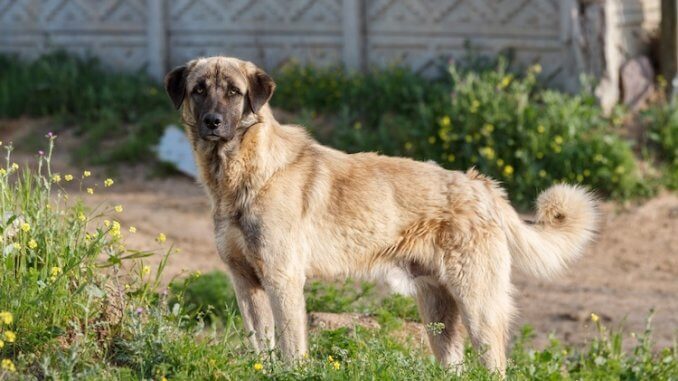
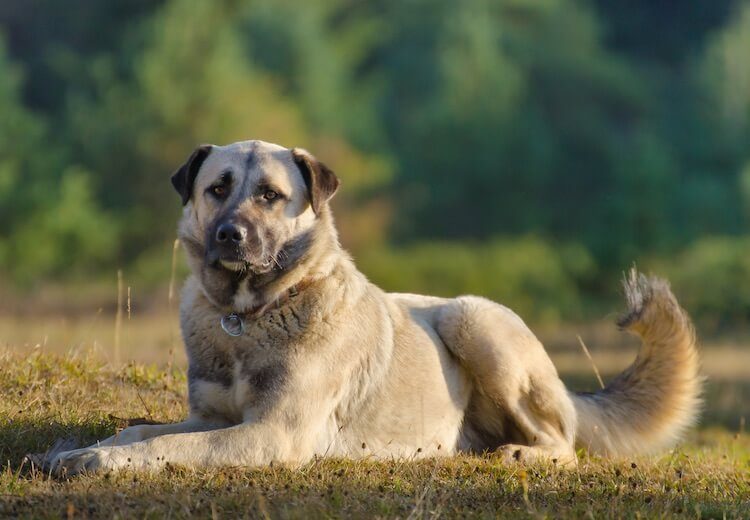
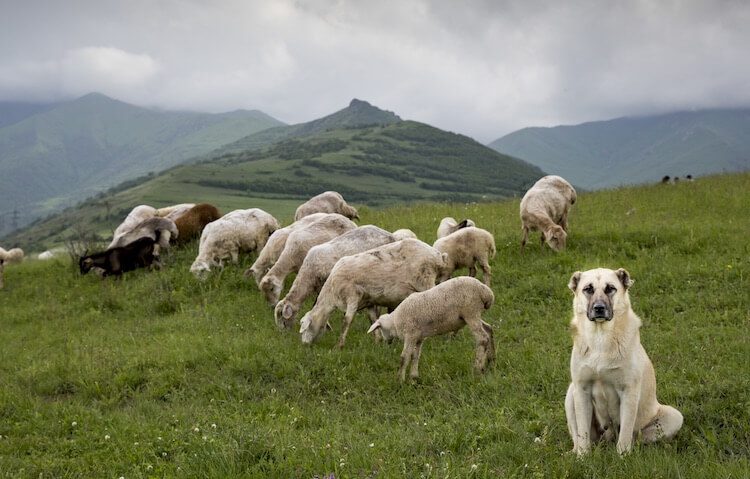
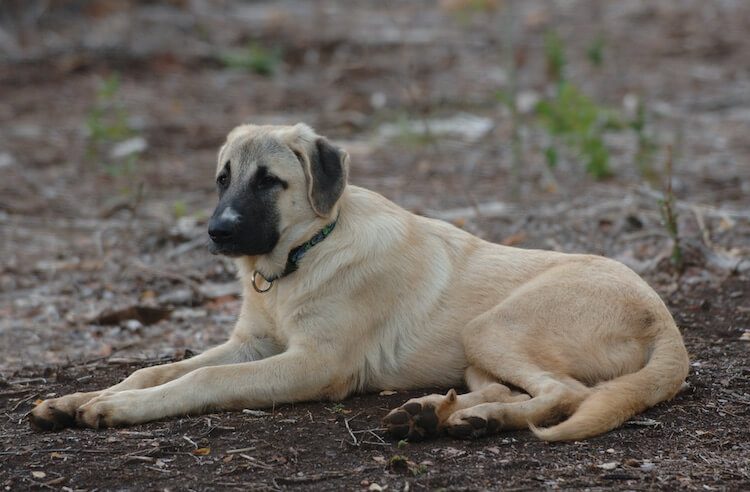
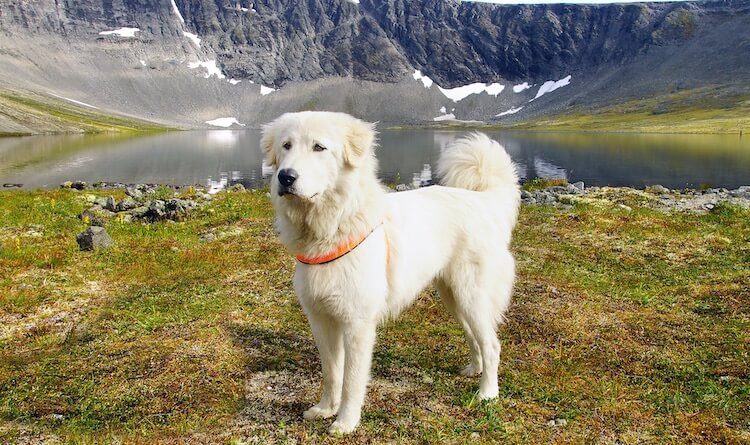
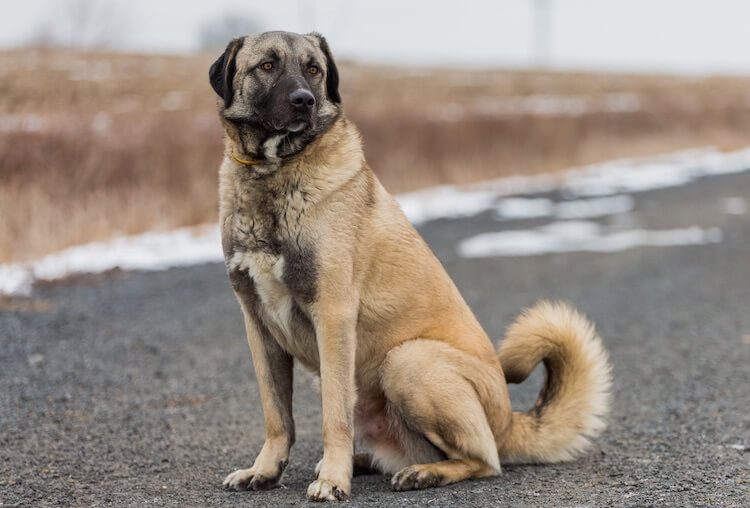
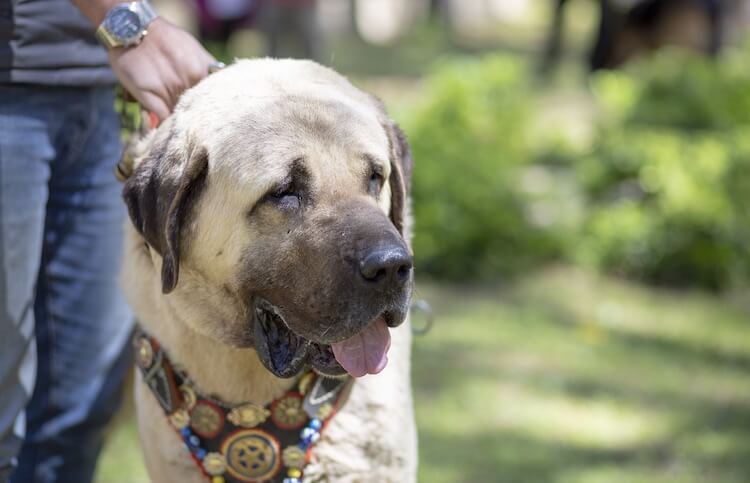

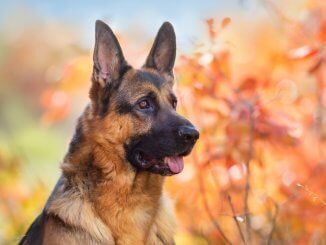
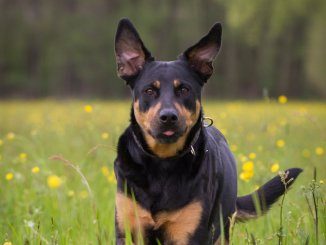

I have my second Anatolian Shepherd Dog. My first one died at 11 years. They are very independent, free thinking dogs. When he gets in “the stance” it means he perceives me to be in danger and at that point he is in charge. He is are normally cool, calm and collected. I got my first one and this one from breeders. He does not do tricks but he does “sit” “down” “4 on the floor” “stand for exam”. He does not “stay” well. But he is so smart it is scary. He does not like dog treats, he likes fruits and veggies as treats.
We have had Anatolians. My first, a female-Stella, past away this summer on her 13th birthday. She was an amazing companion. She’s inspired many people to learn more about this breed but I warned them all that this breed needs space and is very smart and willful. She was calm and careful around my children as infants through childhood. We now have our first male who is 2yo. Together we run about 2-5miles 3-5 days a week. He knows his flock and he understands my commands. He’s ridiculously playful at night when everyone is in their rooms and it’s just us. These dogs are not easy, they are not very affectionate with youths or people who want that from a dog. But when they choose you, it’s the most amazing loyalty and feeling I’ve had since having children.
Would someone let me know if these dogs good traveling companions if introduced to it young? I would like to do some long distance car camping, but I need a dog who will be protective and not stressed out by travel. The rest of the time we will be managing my small farm.
Mine loves to ride in a car but they are also very big so being cramped in a vehicle isn’t very good for them as they love to roam and have a sense of freedom. Mine likes to sleep during the day and roam at night and bark all night long so that’s also something to take into consideration. They bark at night a lot to keep predators away.
We acquired a rescue last December that looks to be mostly Anatolian. 150 lbs was the other giveaway besides appearance! Our experience with Akbash, Pyrenees and now this Anatolian makes us think they would not be terrific traveling companions. All of ours seem to be very attached to their ranch territories and “flocks”. And they will adopt just about anything as part of their flock. Horses, llamas, cats, chickens.
I think you are better off with a German Shepherd. ASDs are more comfortable in their home environment.
I adopted a 1 year old female Kangal Shepherd, Daisy, 2.5 years ago. She had been surrendered and was living in a kennel. Introducing her to my 3 other dogs was a bit tricky and required a disciplined regimen involving a friend who was also good with dogs. I only attempted this endeavor as I am a teacher, with summers mostly free and had 2 straight, uninterrupted weeks at the start of summer to attend to dog matters 24/7. At first, Daisy was aggressive with me, food aggressive with me and my other dogs and required a lot of supervision and gentle, positive reinforcement. As bold and independent as she is, scolding or yelling really upset her. So, the ticket for success was lots of firm, but gentle redirection to distinguish negative behavior, a great deal of affection and lots of treats to reinforce acceptable behaviors. Extinguishing chronic barking after dark took only a spray bottle of water and this negative reinforcement period only took 3 days. Now she only alerts when appropriate. Daisy loves people, even complete strangers. I take her to school with me and my students love to have her in class. At 120 lean, muscular pounds, she looks intimidating. Extinguishing aggression toward stranger dogs who do not follow proper dog social behavior has taken a while and we are still working on that. Now, when we hike and run in area wilderness parks, she responds well to about 90 percent of the stranger dogs we encounter. She loves going shopping with me at Petsmart and behaves around the stranger dogs she encounters there, although I do not allow her to make physical contact as she is so strong and intolerant of dogs who ignore canine decorum upon meeting her. Daisy is ridiculously laid back, comfortable in every new setting and situation and as smart as any dog I have known in 40 years of living with 4 to 7 dogs at a time. She is the first purebred dog I have lived with and, if I could find other Kangals to adopt, I would have a house full. Of the 23 dogs I have adopted and lived with, she is among my all-time favorites. But, I live in the country, have a large fenced in yard and take Daisy on lots of long hikes and runs to keep her exercised. I would not recommend Kangals to just anyone. But, a knowledgeable, experienced with large dominant breeds person would be hard pressed to find a better companion. Oh yeah, I don’t think I ever have to worry about home security as long as Daisy is around.
Greetings
I have a 7 month male Anatolian now at 100+ pounds. Toby has the influence of 3 older females -lab, shepard, and Kelpi. I read about the breed and he has surpassed my expectations already. I have 27 fenced acres. Coyotes have been an issue. Toby, at a young age showed no fear and drove them away with his deep and powerful bark. I